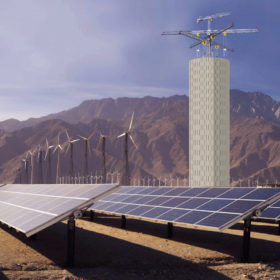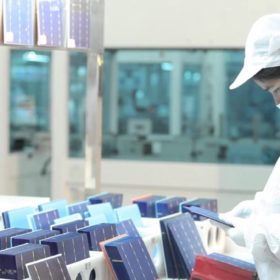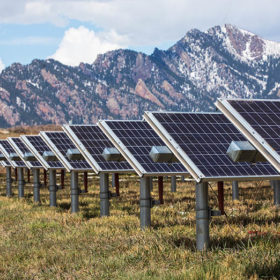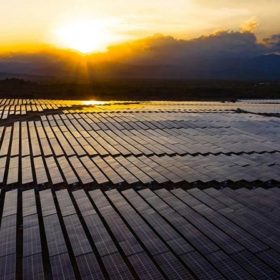Tracking towards complete Trina solutions in the solar sphere
New releases, a confluence of auspicious milestones, and output growing by gigawatts gave Trina Solar in Australia cause to celebrate at All-Energy this week.
Proposed 330 MW Victorian solar farm opts for 500 MWh Swiss battery
Swiss energy storage company Energy Vault has been awarded the contract to supply the in development 330 MW Meadow Creek Solar Farm in Victoria with a 250 MW/500 MWh battery energy storage system.
Globalised supply chains saved $103 billion in solar panel production costs
A new study has calculated that the globalised PV module supply chain has saved billions for PV installers in Germany, the US and China. It also found that if strong nationalistic policies that limit the free flow of talent and capital were implemented going forward, solar panel costs would be 20-25% higher by 2030.
Sydney’s Northern Beaches Council reaps solar savings
Sydney’s Northern Beaches Council has seen its energy costs slashed by switching to renewables.
Cooling down solar modules by increasing space between panel rows
A US research team claims to have demonstrated that increasing the spacing of solar panels between rows improves PV system efficiency and economics by allowing airflow to cool down the modules. The method could improve a project’s LCOE by as much as 2.15% in certain climates.
Vietnam set to open renewable energy market to PPAs
The Vietnamese government has been working on a scheme to allow bilateral power purchase agreements (PPAs) since 2020. The start of the pilot scheme has been delayed and is now expected for the first quarter of 2023. The official program would launch in 2025.
Tile on the high-performance PV!
A commercial and residential solar installation company with diversified interests as a developer of some of Australia’s biggest solar farms, Leeson Group is now taking a high-performance, Australian-engineered solar roof tile to the global market.
Sun Cable sets sights on interconnecting Asia
Singapore-based Sun Cable, which is seeking to develop the giant Australia-Asia PowerLink (AAPowerLink) consisting of up to 20 GW of solar and 42 GWh of energy storage on a 12,000-hectare site in the Northern Territory, is forming a consortium to advance sustainable smart energy grids in Asia.
Space-based solar power for terrestrial energy needs
The Cassiopeia solar project aims to use the sunlight collected by a space satellite for terrestrial energy needs. The electricity generated would be converted to radio frequency microwave radiation transmitted to an antenna on Earth. The initial LCOE would be $73.4 (USD 47.8)/MWh, according to a UK study.
Algae could boost solar panel efficiency by 4%
A Swedish team has inaugurated a pilot facility to mass produce algae material that can potentially boost silicon solar module efficiency by 4% and thin film by 36%. The algae are added to the encapsulant in silicon-based modules or to the anti-reflective coating on the glass of thin film modules. The team estimates the resulting modules would be 3.9% cheaper.















